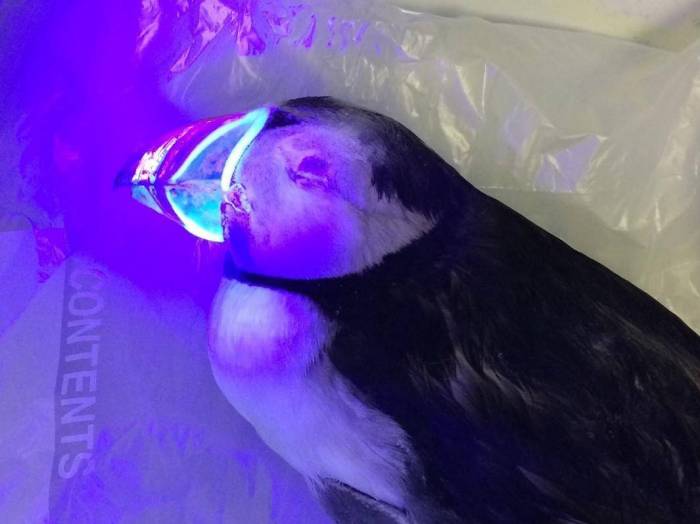Scientists have long suspected that the well-known seabirds’ colourful bills are a form of display, perhaps involved in attracting the opposite sex.
But Jamie Dunning, an ornithologist affiliated with the University of Nottingham, always suspected there may be more to their beaks than immediately met the eye.
Birds like puffins possess the ability to see not only the red, blue and green light humans can see, but also wavelengths at the UV end of the spectrum.
This means they can see UV “colours” in objects humans cannot. Those colours can only be revealed to us by placing the objects under UV light.
In other species this knowledge has led scientists to discover patterns and colours in feathers that are not visible to humans.
“With a puffin’s bill you don’t have to look at it very long to see that there’s hundreds of thousands of years of sexual selection there,” Mr Dunning told The Independent.
It occurred to him that while puffin beaks are colourful enough to human vision, there may be more going on in the UV spectrum.
He tested this idea on a dead puffin to begin with.
“I had one in the freezer – I’m the kind of guy people send dead birds to,” said Mr Dunning. “I had a UV light because we do a lot of spider stuff in the lab and a lot of them and scorpions glow in UV light, so I just turned the torch on the puffin and took a photo of what I saw.”
The yellow ridges on the puffin’s beak glowed – something other puffins can see under normal daylight conditions due to their ability to view UV.
Together with colleagues in Canada, Mr Dunning has written up a description of the puffins’ glowing beak, and they are currently awaiting publication of the report in a scientific journal.
Having tested the fluorescent properties of dead puffins, the team want to ensure the same effect is seen in living specimens.
To shield their puffin subjects’ eyes from bright UV light, Mr Dunning had sunglasses made.
For the time being the function of the puffin’s glowing beak is still essentially a mystery, but he suspects it has something to do with signalling sexual prowess to other puffins.
“The obvious things with puffin bills – the bit we all know, the big beautiful orange bill, is that it actually comes off after the breeding season,” said Mr Dunning.
Over winter, puffins are left with beaks that are small and brown.
“Their ornamentation develops specifically for the breeding season, so the clues are there it’s for sexual selection, and therefore the clues are there that this UV is an adaptation for sexual signalling,” he said.
More about: science
















































